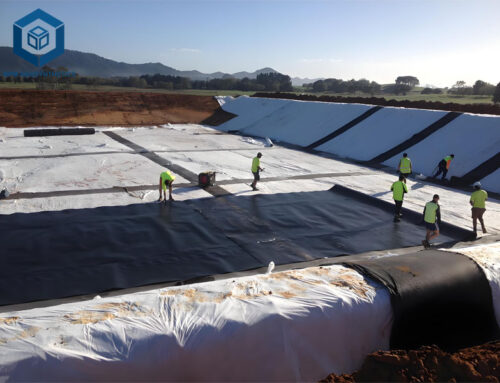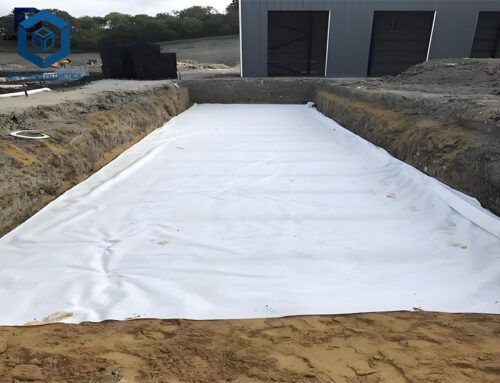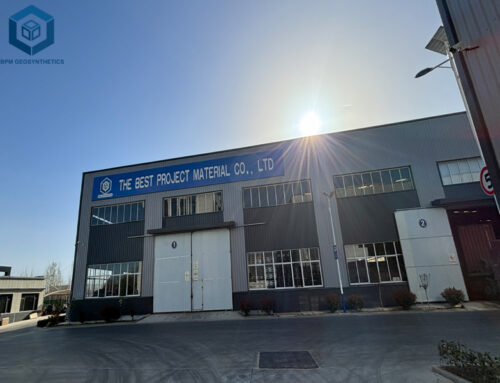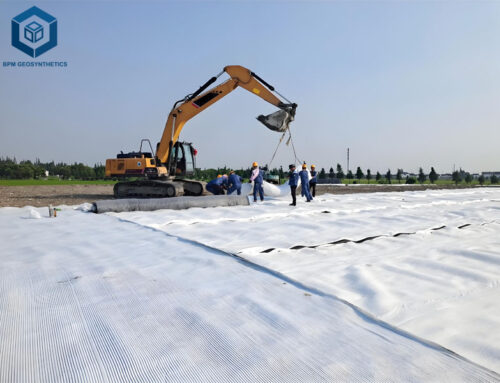Geotextile fabrics are essential materials in construction, civil engineering, and landscaping projects. Geotextile fabrics provide separation, filtration, reinforcement, drainage, and erosion control. However, selecting the right geotextile can be challenging. This guide will help you determine the best type ( Geotextile Fabric Near Me ), key selection criteria, and where to find reliable Geotextile suppliers near you.
1. Types of Geotextile Fabric Near Me
1.1 Introduction of Nonwoven Geotextile
Nonwoven geotextiles are versatile, permeable synthetic fabrics made from randomly arranged polypropylene or polyester fibers bonded together through mechanical (needle-punching), thermal, or chemical processes. Unlike woven geotextiles, their nonwoven structure provides excellent filtration, drainage, and separation capabilities, making them ideal for a wide range of civil engineering and environmental applications.
1.1.1 Performance Advantages:
- Optimal Hydraulic Performance – Superior water permeability with precise soil retention.
- Multi-Functional Design – Simultaneously filters, separates, protects, and drains.
- Engineered Durability – UV-stabilized formulations resist degradation.
- Conformability – Adapts to subgrade contours for uniform stress distribution.
- Chemical Resistance – Withstands harsh pH environments and biological factors.
1.1.2 Engineering Applications:
- Advanced Drainage Systems – Subsurface drainage layers, leachate collection.
- Infrastructure Protection – Separation interlayer for roadbeds and rail ballast.
- Containment Security – Landfill liner protection and erosion control barriers.
- Hydraulic Works – Coastal revetment filters and canal lining underlayers.
- Agricultural Innovation – Soil stabilization matrices for green infrastructure.
1.2 Introduction of Woven Geotextile
Woven geotextiles represent engineered geosynthetic materials manufactured through precise interlacing of high-tenacity polypropylene or polyester yarns. Utilizing advanced weaving technologies, these textiles achieve exceptional dimensional stability and load-bearing characteristics, making them the premier choice for demanding reinforcement applications in civil infrastructure projects.
1.2.1 Structural Advantages:
- Ultra-High Tensile Strength – Engineered for superior load distribution and stress absorption.
- Dimensional Integrity – Maintains structural form under extreme loading conditions.
- Precision Engineering – Customizable weave patterns for specific performance requirements.
- Long-Term Durability – UV-resistant formulations with exceptional abrasion resistance.
- Controlled Permeability – Optimized fabric porosity for balanced filtration.
1.2.2 Critical Engineering Applications:
- Heavy-Duty Pavement Systems – Base reinforcement for highways and airport runways.
- Slope Stabilization – Reinforced earth structures and embankment support.
- Railway Infrastructure – Ballast layer separation and track bed stabilization.
- Retaining Systems – Integral component in mechanically stabilized earth walls.
- Coastal Protection – Armor system integration for erosion control.
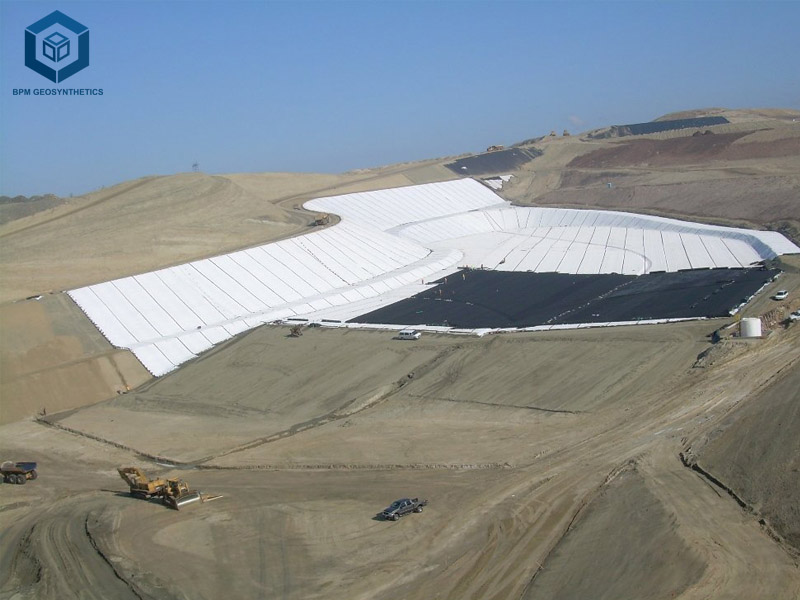
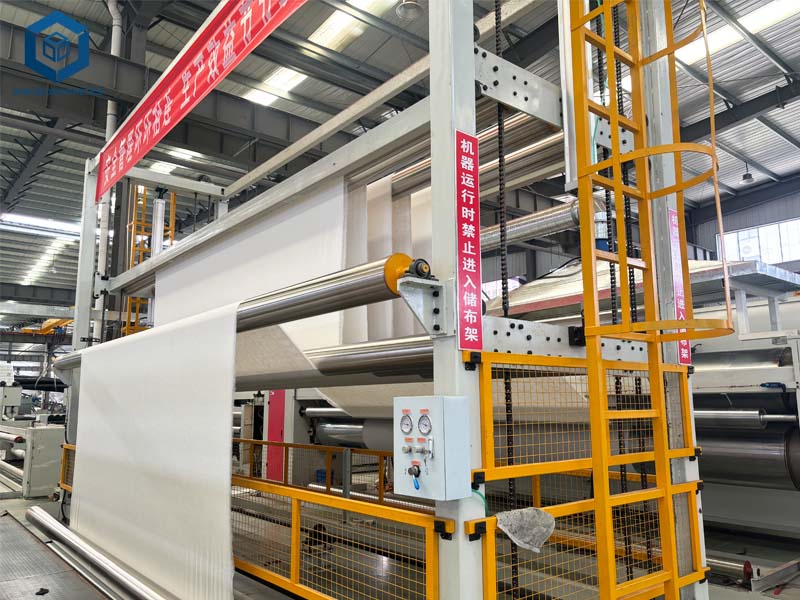
2. How to Choose the Right Geotextile Fabric Near Me
2.1 Define the Project Requirements
- Separation? → Woven (e.g., road base stabilization).
- Filtration/Drainage? → Nonwoven(e.g., behind retaining walls).
- Erosion Control? → Nonwoven (temporary) or Woven (permanent).
2.2 Check Soil & Load Conditions
- Sandy/Gravel Soil? → Woven for stability.
- Clay/Silty Soil? → Nonwoven for better drainage.
- Heavy Traffic Loads? → High-strength woven.
2.3 Verify Permeability Needs
- Need water flow? → Nonwoven (higher flow rate).
- Need to block fine particles? → Woven (tight weave).
2.4 Consider Durability & Lifespan
- UV Exposure? → UV-stabilized geotextiles.
- Chemical Resistance? → Polypropylene-based fabrics.
2.5 Final Recommendation
- For roads, driveways, and heavy loads → Woven Geotextile.
- For drainage, filtration, and erosion control → Nonwoven Geotextile.
3. How to Choose Geotextile Fabric Suppliers Near Me?
When selecting geotextile fabric suppliers, it’s important to consider several key factors to ensure you get quality materials and reliable service. Here’s what to look for:
3.1 Key Selection Criteria
- Product Quality & Certifications
- Look for ISO-certified manufacturers like BPM Geotextile
- Verify product specifications meet your project requirements
- Request material test reports
3.2 Experience & Expertise
- Choose established suppliers with proven industry experience
- BPM Geotextile has over 15 years in geosynthetics manufacturing
3.3 Product Range
- Select suppliers offering a complete range (woven, non-woven, composite geotextiles)
- We provide all major types in various weights and strengths
3.4 Customization Options
- Look for suppliers who can customize width, length, and specifications
- BPM offers tailored solutions for unique project needs
3.5 Local Support & Logistics
- Consider suppliers with warehouses near your location
- We maintain strategic inventory for quick delivery
4. Why Choose BPM Geotextile?
-
Quality Assurance: Strict quality control from raw materials to finished products
-
Competitive Pricing: Direct factory pricing without middlemen
-
Technical Support: Expert guidance for proper product selection
-
Reliable Supply: Stable production capacity to meet large orders
-
Global Experience: Products successfully used in international projects
For your geotextile needs, we invite you to contact BPM Geotextile for a consultation and quote. Our team is ready to assist with your specific project requirements.
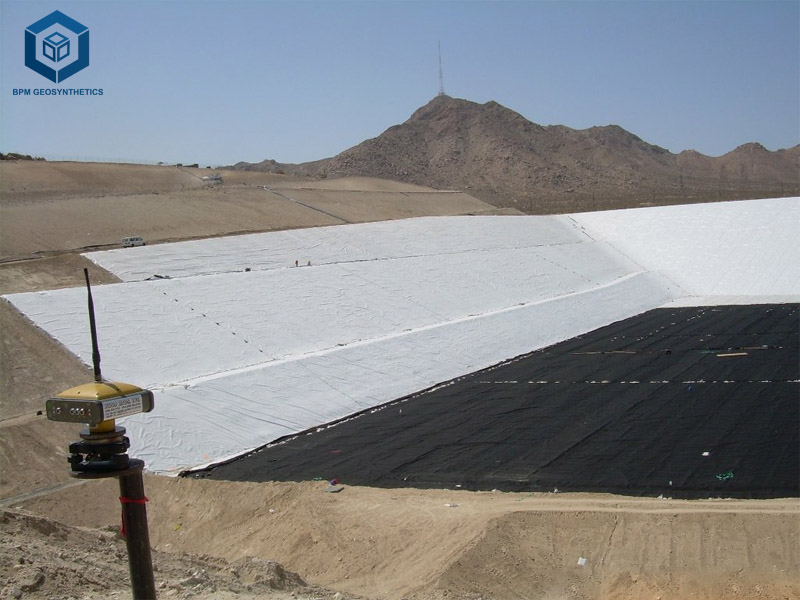
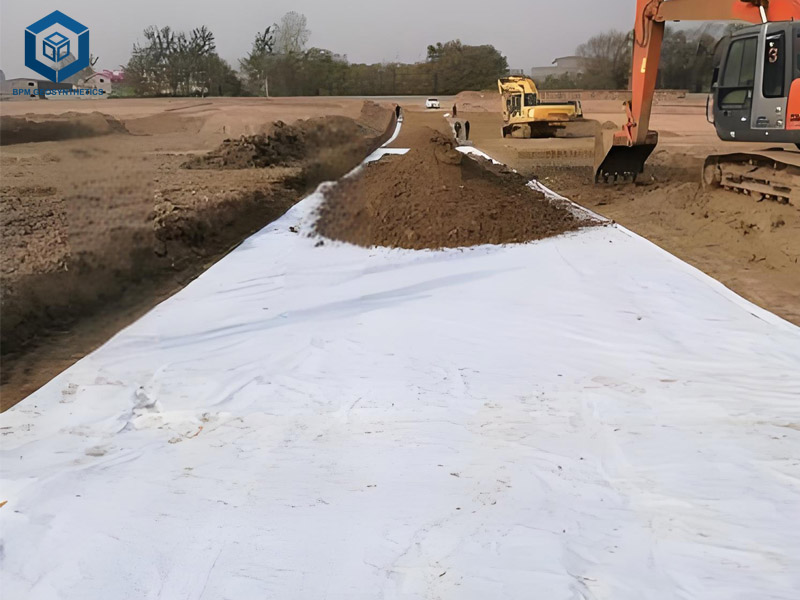
5. How to identify the quality of Geotextile Fabric Near Me?
5.1 Material Composition & Manufacturing Process
-
Non-Woven Geotextiles: Should be made from high-quality polypropylene or polyester fibers, needle-punched for strength.
-
Woven Geotextiles: Should have uniform weaving with UV stabilization for durability.
-
BPM Geotextile uses virgin raw materials (not recycled) and advanced production techniques to ensure consistency.
5.2 Physical & Mechanical Properties
-
Tensile Strength (ASTM D4632): Higher strength means better load distribution.
-
Puncture Resistance (ASTM D4833): Important for preventing damage during installation.
-
Elongation at Break: Should be balanced—too high or too low can affect performance.
-
CBR Burst Strength (ASTM D6241): Measures resistance to penetration.
- BPM Geotextile provides certified test reports for all these parameters, ensuring compliance with international standards.
5.3 Hydraulic Properties (For Drainage & Filtration)
-
Permittivity & Porosity (ASTM D4491): Determines water flow efficiency.
-
Apparent Opening Size (AOS) (ASTM D4751): Controls soil retention while allowing water passage.
- Our geotextiles are engineered for optimal filtration, preventing clogging while maintaining permeability.
5.4 Durability & UV Resistance
-
Look for UV-stabilized geotextiles if exposed to sunlight.
-
BPM Geotextile products are treated with UV inhibitors for long-term outdoor use.
5.5 Certifications & Compliance
-
Reputable suppliers should have ISO 9001, CE, GSI, or other relevant certifications.
-
BPM Geotextile meets ASTM, ISO, and EN standards, with full quality documentation available.
5.6 Visual & Tactile Inspection
-
Uniform thickness with no weak spots or inconsistencies.
-
No fraying edges or loose fibers in non-woven geotextiles.
-
Smooth, tight weave in woven geotextiles.
6. Summary
In conclusion, selecting the right geotextile fabric near you requires careful consideration of material quality, strength specifications, hydraulic performance, durability, and supplier reliability. By prioritizing certified products with proven test results and choosing an experienced manufacturer like BPM Geotextile, you ensure your project benefits from high-performance geosynthetics that deliver long-term stability and cost efficiency. With BPM Geotextile’s commitment to superior raw materials, strict quality control, and technical expertise, you gain not just a product but a trusted solution tailored to your engineering needs. For geotextiles that combine innovation with reliability, BPM Geotextile stands as your ideal partner, ready to support your project from specification to installation with unmatched quality and service.

